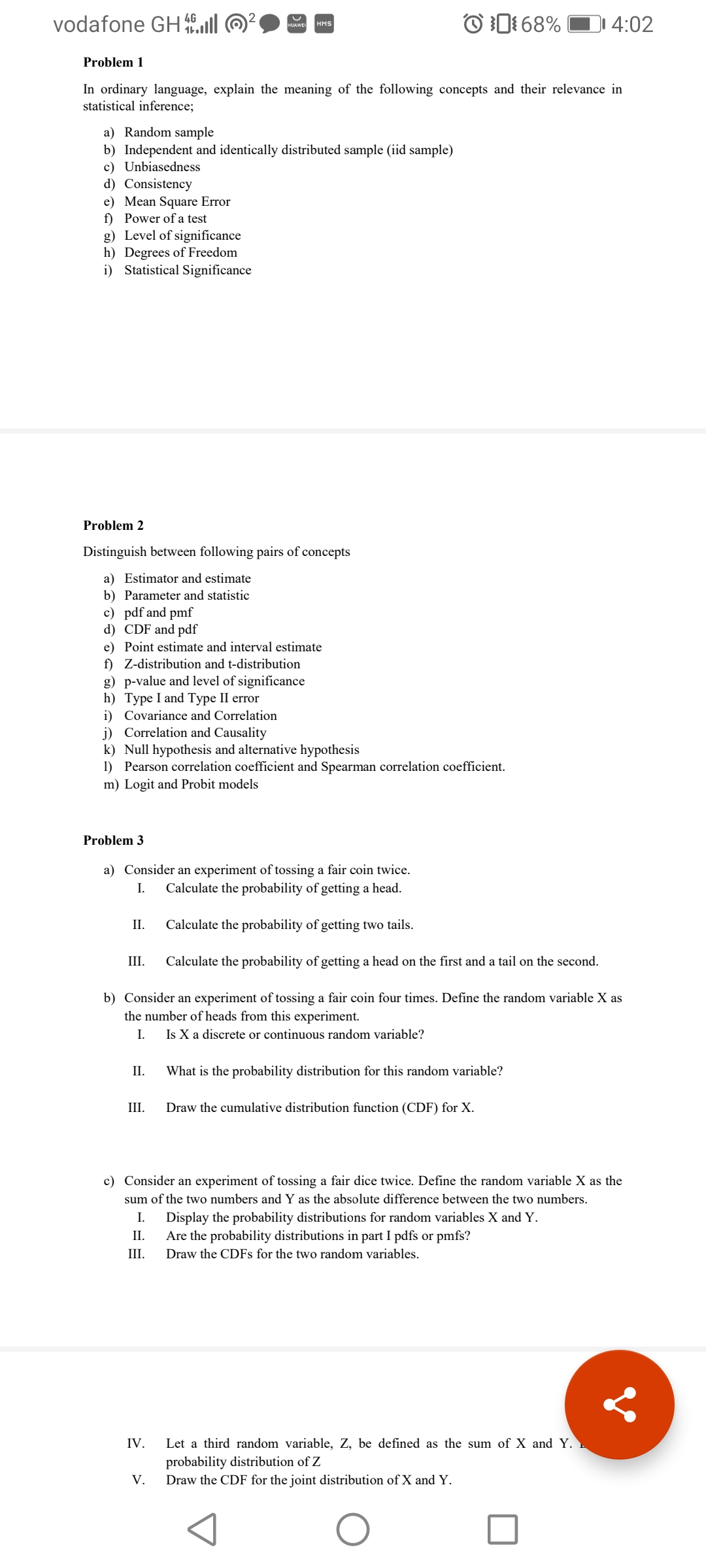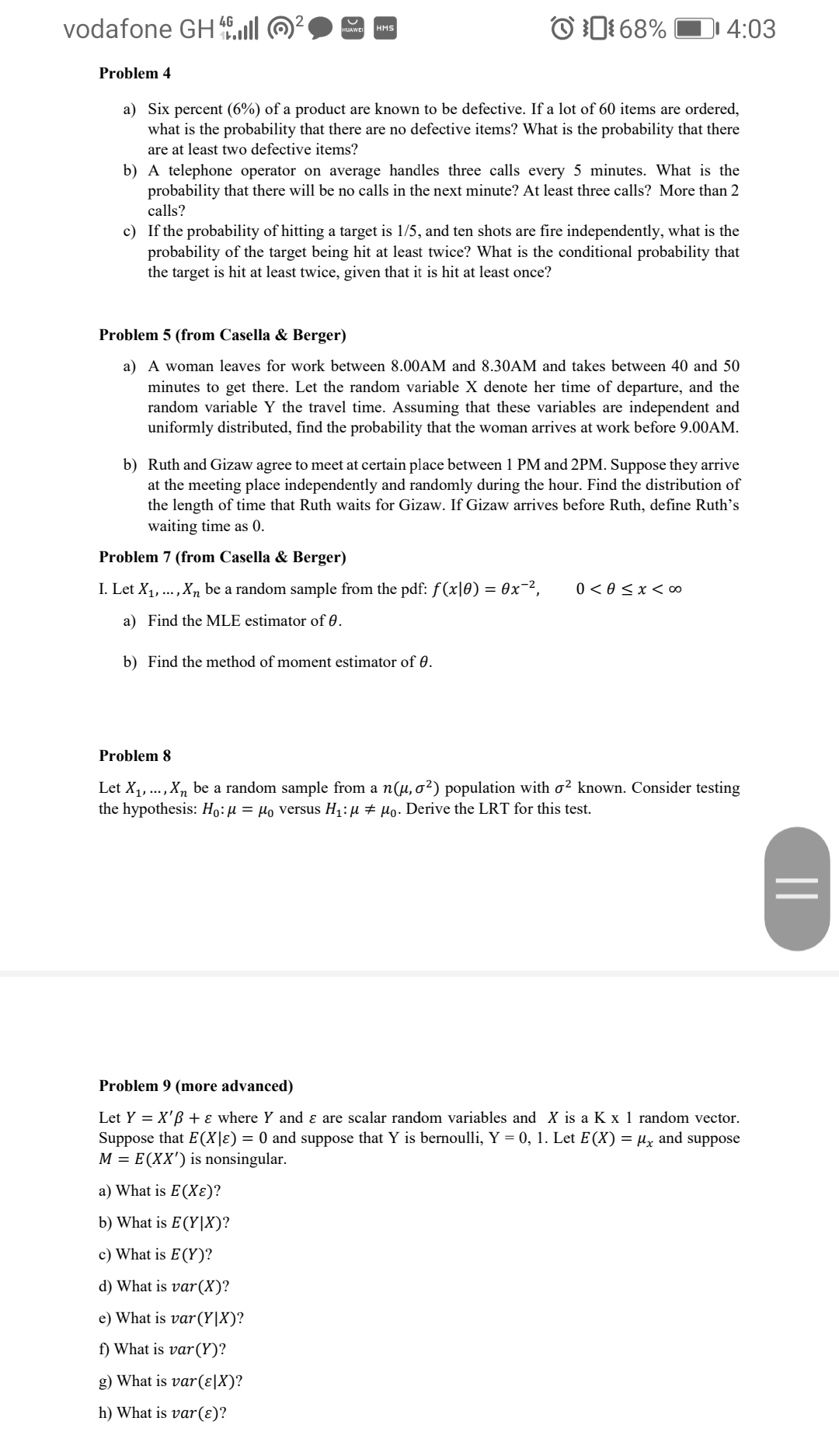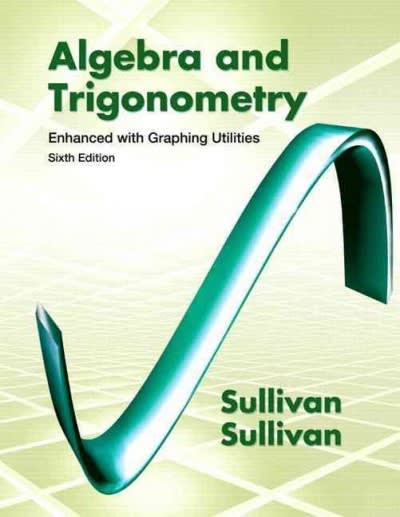Please assist me with the following questions.
vodafone GH . Ill )29 MMS 10 68% 1 4:02 Problem 1 In ordinary language, explain the meaning of the following concepts and their relevance in statistical inference; a) Random sample b) Independent and identically distributed sample (iid sample) c) Unbiasedness d) Consistency e) Mean Square Error f) Power of a test g) Level of significance h) Degrees of Freedom i) Statistical Significance Problem 2 Distinguish between following pairs of concepts a) Estimator and estimate b) Parameter and statistic c) pdf and pmf d) CDF and pdf e) Point estimate and interval estimate f) Z-distribution and t-distribution g) p-value and level of significance h) Type I and Type II error i) Covariance and Correlation j) Correlation and Causality k) Null hypothesis and alternative hypothesis 1) Pearson correlation coefficient and Spearman correlation coefficient. m) Logit and Probit models Problem 3 a) Consider an experiment of tossing a fair coin twice. I. Calculate the probability of getting a head. II. Calculate the probability of getting two tails. III. Calculate the probability of getting a head on the first and a tail on the second. b) Consider an experiment of tossing a fair coin four times. Define the random variable X as the number of heads from this experiment. I. Is X a discrete or continuous random variable? II. What is the probability distribution for this random variable? III. Draw the cumulative distribution function (CDF) for X. c) Consider an experiment of tossing a fair dice twice. Define the random variable X as the sum of the two numbers and Y as the absolute difference between the two numbers. I. Display the probability distributions for random variables X and Y. II. Are the probability distributions in part I pdfs or pmfs? III. Draw the CDFs for the two random variables. IV. Let a third random variable, Z, be defined as the sum of X and Y. probability distribution of Z V . Draw the CDF for the joint distribution of X and Y. Ovodafone GH \"Roll ((-32. G 30168% E1|4203 Problem 4 a) Six percent (6%) of a product are known to be defective. If a lot of 60 items are ordered, what is the probability that there are no defective items? What is the probability that there are at least two defective items? b) A telephone operator on average handles three calls every 5 minutes. What is the probability that there will be no calls in the next minute? At least three calls? More than 2 calls? c) [f the probability of hitting a target is 1/5, and ten shots are re independently, what is the probability of the target being hit at least twice? What is the conditional probability that the target is hit at least twice, given that it is hit at least once? Problem 5 (from Casella & Berger) a) A woman leaves for work between 8.00AM and 8.30AM and takes between 40 and 50 minutes to get there. Let the random variable X denote her time of departure, and the random variable Y the travel time. Assuming that these variables are independent and uniformly distributed, nd the probability that the woman arrives at work before 9.00AM. b) Ruth and Gizaw agree to meet at certain place between 1 PM and 2PM. Suppose they arrive at the meeting place independently and randme during the hour. Find the distribution of the length of time that Ruth waits for Gizaw. If Gizaw arrives before Ruth, dene Ruth's waiting time as 0. Problem 7 (from Casella & Berger) I. Let X1, ...,X,1 be arandom sample from the pdf: f(xl9) = ear2. 0








